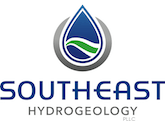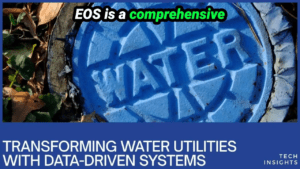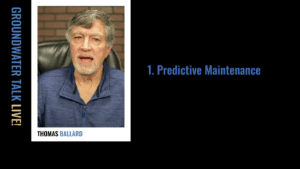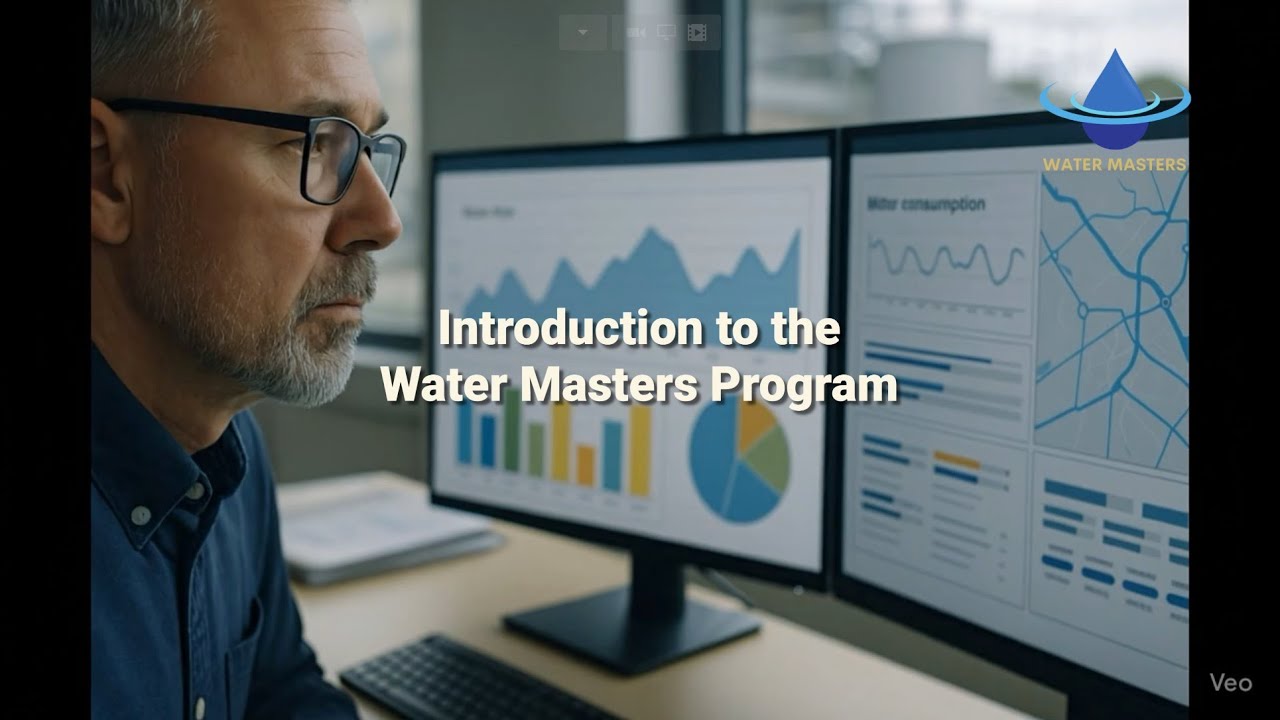
If you manage a small water system, you already know how much of your day can be swallowed by emergencies, paper files, and firefighting. Water system management training is not just about keeping operator certifications current. You need a systematic approach that turns reactive management into proactive leadership. In this guide you will get a practical, step-by-step plan to implement water system management training that moves your utility from “run to failure” to predictive, data-driven operations.

Step 1: Assess where you are now — identify the reactive cycle
You must start by diagnosing your current management approach. Many small systems spend roughly 80 percent of their time firefighting. That means emergency repairs, overnight callouts, and deferred maintenance that grows into crisis-level failures. If your board approves work only when pipes break, you are operating in a reactive cycle.
Key questions to answer during your initial assessment:
- How many emergency calls did you respond to last year?
- What percentage of your staff time is spent on unplanned repairs?
- Where is your critical asset information stored: paper files, spreadsheets, or a searchable database?
- Do you have data trends on pressure, water quality, and non-revenue water?
Quote to carry forward: “The value of data is really in the trends.” Use that idea as your North Star during the assessment.
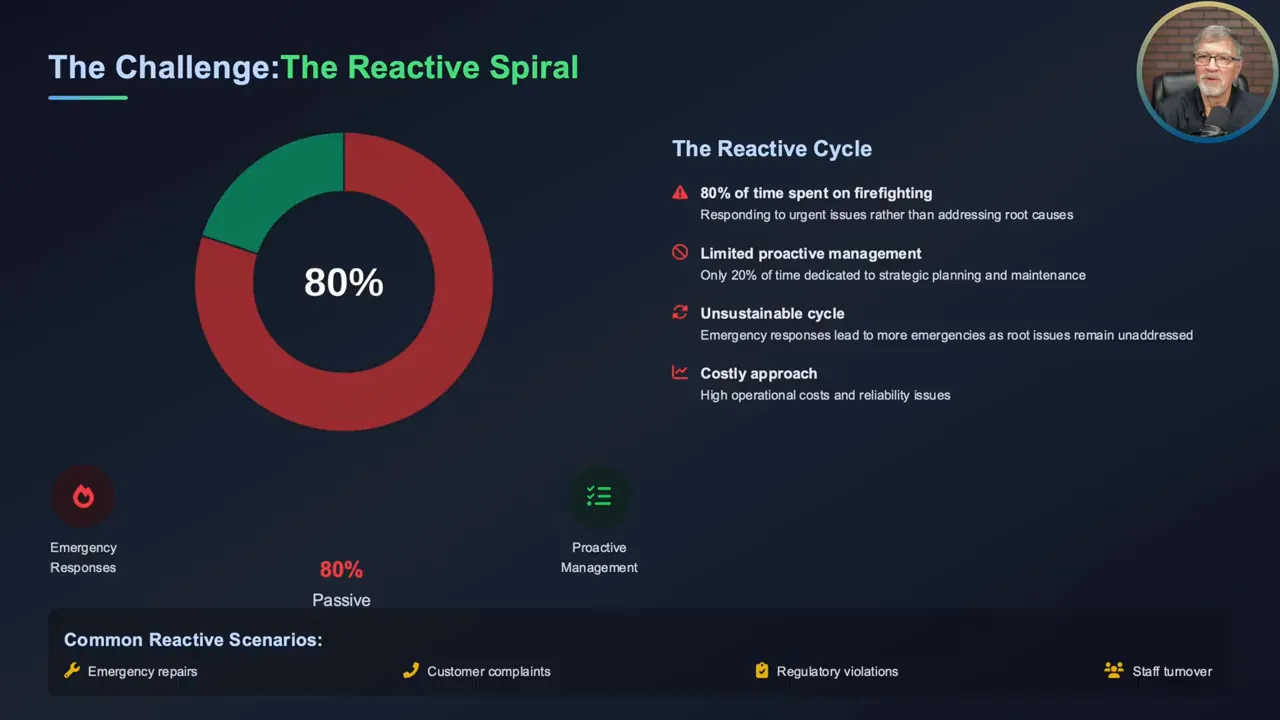
Step 2: Commit to a systematic utility management approach
A cornerstone of effective water system management training is establishing repeatable processes that go beyond standalone SOPs. You want a system that reduces reliance on any one person’s memory. Replace tribal knowledge with written, tested, and accessible processes that anyone on the team can follow.
Fundamental components of systematic utility management include:
- Standard operating procedures that are version controlled
- Clear roles and cross-training to reduce single points of failure
- Simple performance dashboards and key performance indicators
- Decision workflows tied to data triggers rather than anecdotes
When you standardize operations you make modernization easier and reduce resistance to change. A stepwise rollout with defined milestones helps overcome “we have always done it this way” inertia.
Step 3: Implement asset management and capital planning
Asset management is the engine that converts your data into the right investments. Treat assets as lifecycle entities: assessment, planning, implementation, operation, maintenance, and decommissioning. If you can reliably evaluate condition and remaining useful life, you can prioritize spending and reduce emergency replacements.
Start with a compact asset register. Even a simple spreadsheet or GIS layer that lists:
- Asset type and location
- Installation or replacement date
- Condition rating and expected remaining life
- Criticality ranking (how many customers affected if asset fails)
From that register you can build a data-driven capital improvement plan that you can present confidently to your board. When the board sees data, you will get stronger buy-in for necessary investments.
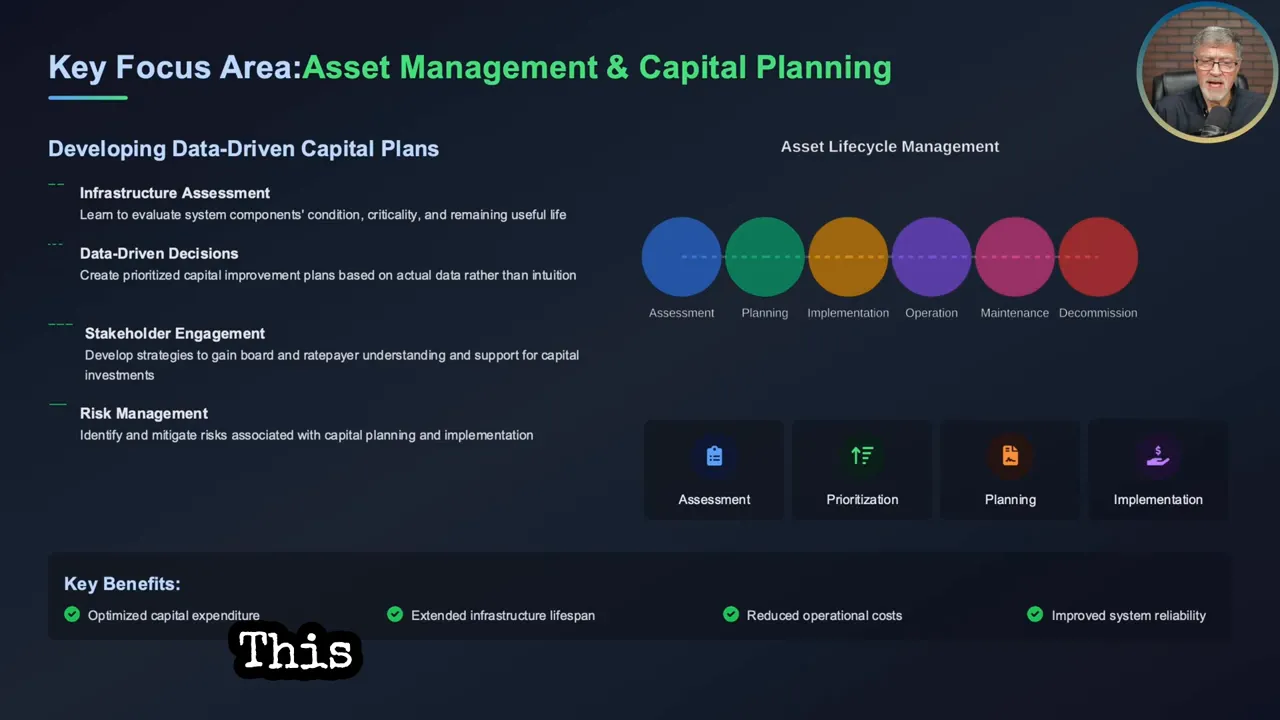
Step 4: Prioritize water supply and water loss management
Non-revenue water is often the best low-hanging fruit. Small investments yield disproportionate returns when you target leaks, pressure management, and metering accuracy. Adopt a structured water loss program that follows recognized methodologies like AWWA M36 but feel free to incorporate newer tools like pressure modulation and satellite leak detection.
What to include in your water loss program:
- Accurate water balances and district metered areas
- Systematic leak detection routines
- Pressure management to reduce stress on mains
- A meter testing and replacement schedule
Real-world results are clear: systems using these approaches have reported meaningful reductions in water loss and operating expenses. Small Midwestern utilities have seen a 40% reduction in emergency calls and real dollar savings in avoided emergency replacements.
Step 5: Capture and retain institutional knowledge
Knowledge retention is not optional. When long-time operators and managers retire, the system can lose decades of practical experience unless you capture it. Move that knowledge from heads to a searchable knowledge base.
Steps to build knowledge retention:
- Document SOPs for routine and emergency tasks
- Create equipment dossiers with photos, serial numbers, and operating tips
- Record short video walkthroughs for complex tasks
- Store all documentation in the cloud with version control and access logs
Use AI and simple indexing tools to make that knowledge discoverable. When a new hire can look up a valve, a pump, or a troubleshooting checklist, you shorten the learning curve and reduce the risk of mistakes.
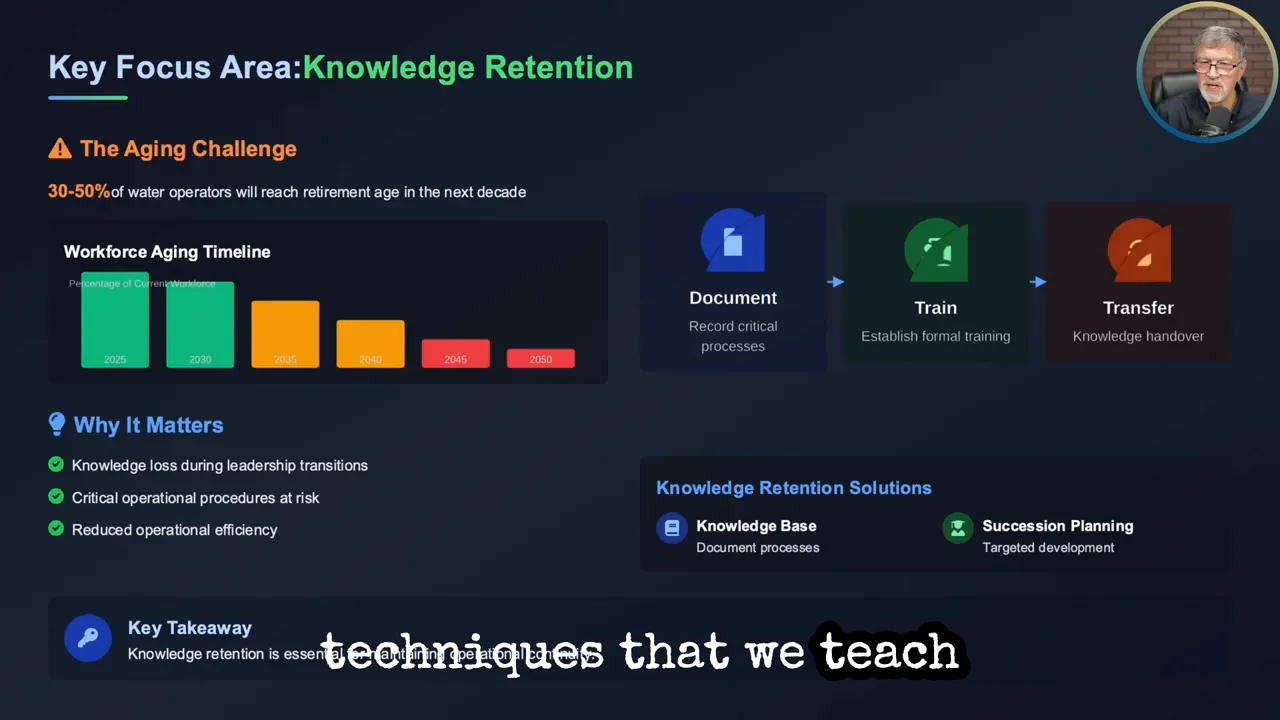
Step 6: Integrate technology and enable data-driven decision-making
Technology adoption is no longer out of reach for small utilities. Internet of things devices, improved SCADA inputs, affordable GIS, and AI-driven analytics let you move from spreadsheets to dashboards. Start small and scale up.
Practical technology roadmap:
- Migrate critical paper files to spreadsheets and then to a GIS-enabled asset register
- Add targeted sensors for pressure and flow on critical mains
- Use simple dashboards to visualize KPIs in real time
- Leverage predictive analytics to schedule maintenance before failures occur
Even a spreadsheet-based dashboard updated regularly is better than no dashboard. Your objective is to make trends visible so you can prioritize operations and capital projects using data rather than intuition.
Step 7: Build a training format that sticks — mastermind or coaching
Water system management training works best when it combines peer learning with expert input. Two formats are effective:
- Mastermind cohort: Small groups of up to eight participants meeting weekly online. Peer learning, subject matter sessions, and shared problem solving provide momentum and accountability.
- Individual coaching: Customized support when your utility needs targeted help on a unique challenge or wants a rapid implementation plan.
Choose the format that fits your capacity. Cohorts create peer pressure and shared learning. Coaching is ideal when you need tailored deliverables such as a data-driven capital plan or a knowledge retention system implemented quickly.
Step 8: Measure outcomes and demonstrate ROI
To sustain long-term change you must quantify results and show your board clear returns on investment. Typical measurable improvements from systematic, data-driven approaches include:
- Emergency call reductions of 15 to 25 percent
- Operating cost reductions of 10 to 20 percent
- Compliance score improvements of 30 to 40 percent
- Substantial reductions in water loss and non-revenue water
There are examples where a small utility avoided multi-million dollar emergency costs by proactively addressing high-risk assets and leaks. Tracking those savings and tying them to specific actions is how you scale funding for future modernization.
Step 9: Focus on the right scale — small utilities under 3,000 connections
This approach is optimized for smaller systems, typically those under 3,000 connections. You will benefit more quickly because:
- Decision chains are shorter and changes deploy faster
- Relative ROI on fixes like pressure control and leak detection is higher
- You can often implement cloud tools and dashboards without long procurement cycles
If you manage a system of this size, you can move quickly from manual processes to a modern, predictable utility. That speed is an advantage — use it.
Step 10: Address workforce challenges and succession planning
Workforce turnover, knowledge gaps, and the silver tsunami of retiring staff create urgent needs for water system management training. Address these risks by:
- Establishing clear succession plans for key roles
- Cross-training operators and documenting critical tasks
- Using the documented knowledge base as an onboarding toolkit
By institutionalizing knowledge and training, you prevent operational disruption when experienced staff leave.
Step 11: Plan for security, vulnerability, and regulatory compliance
Physical security and cybersecurity are now part of routine utility management. Include vulnerability assessments, access controls, and cybersecurity best practices as part of your water system management training. Keep compliance scores strong by monitoring key regulatory KPIs and addressing issues promptly.
Step 12: Take the first steps now — tactical checklist
Here is a concise checklist you can implement this month to begin your water system management training rollout:
- Inventory critical assets and start a cloud-based register
- Run a 12-month water balance and identify the top two sources of non-revenue water
- Document three SOPs for high-risk operations and store them in the cloud
- Set up a simple KPI dashboard with emergency call count and water loss metrics
- Form a small mastermind or schedule a coaching call to get accountability
These early wins will generate momentum and justify additional investment.
“We want to move from emergency response to proactive management and get rid of that 80 percent passive firefighting.” Use that as your guiding objective.
Program content overview
Your water system management training should cover these 16 critical areas:
- Systematic Utility Management
- Asset Management
- Capital Improvement Plans
- TMF and Capacity Development
- Water Supply Management
- Knowledge Retention
- Supply Chain Management
- Measurement and Benchmarking — KPIs
- Physical Security and Cybersecurity
- Vulnerability Assessment
- Process Management Plans, BMPs, SOPs, DWMQA Tasks
- Strategic Planning
- Emergency Planning and Response
- Rate Setting
- Technology and AI
- Water Loss
Work through these areas in prioritized sprints so you do not overwhelm staff and so each improvement builds on the last.
Final thoughts
Water system management training is not an abstract luxury. It is an essential investment that changes how you operate, spend, and respond. By moving to systematic utility management, capturing institutional knowledge, and using targeted technology, you can reduce emergency calls, lower costs, improve compliance, and protect your community’s service continuity.
Start small, measure everything, and keep iterating. The result will be a resilient, data-driven utility that acts before failures occur rather than reacting after the damage is done.
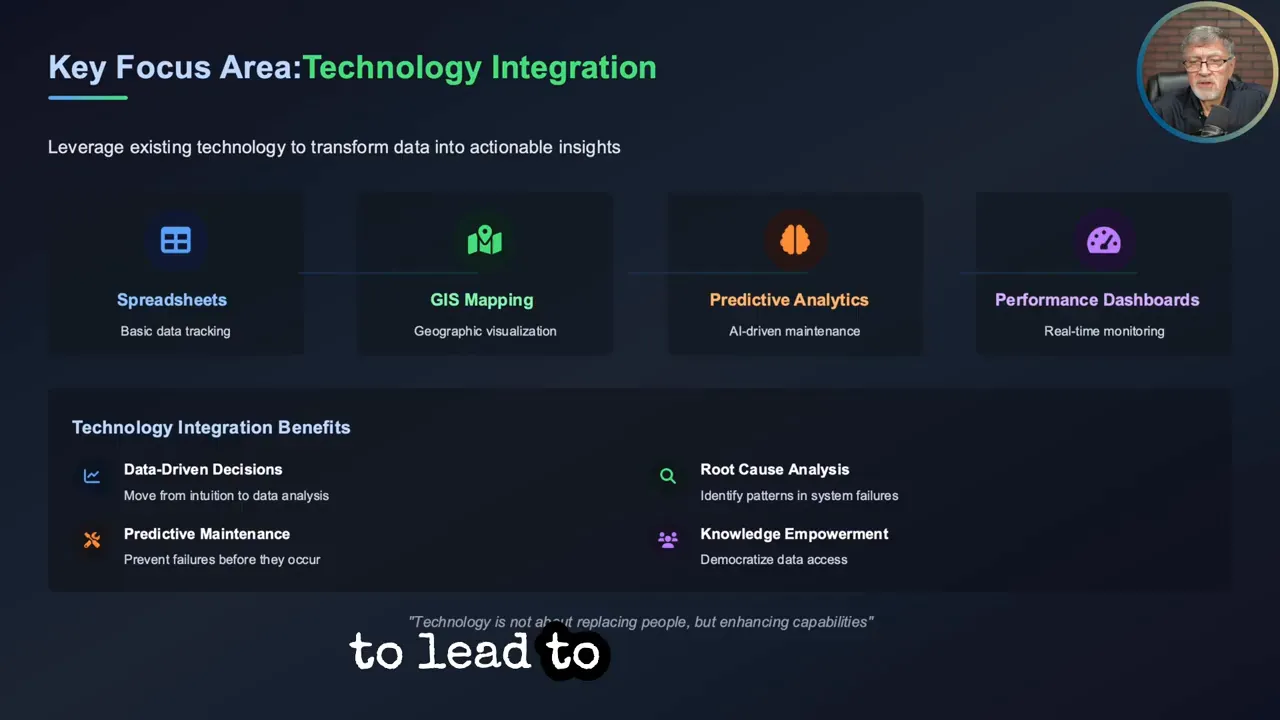
If you are ready to commit to a modern approach, choose a training path that suits your capacity: a small mastermind cohort to learn with peers or individual coaching for targeted implementation. Either way, your next step is to turn your data into decisions.
